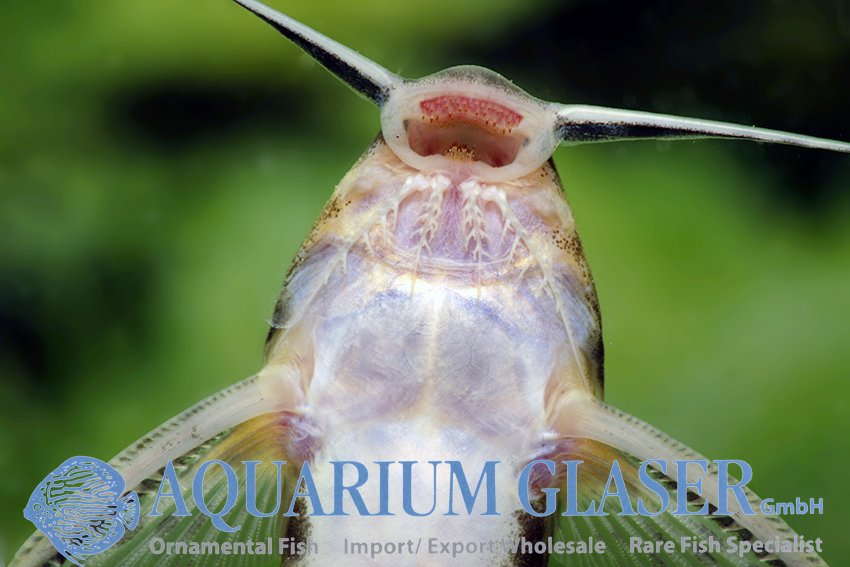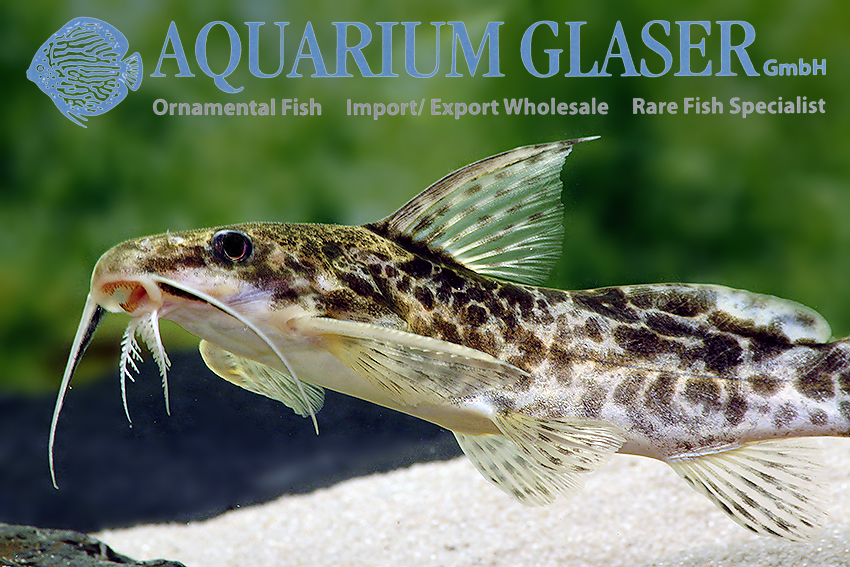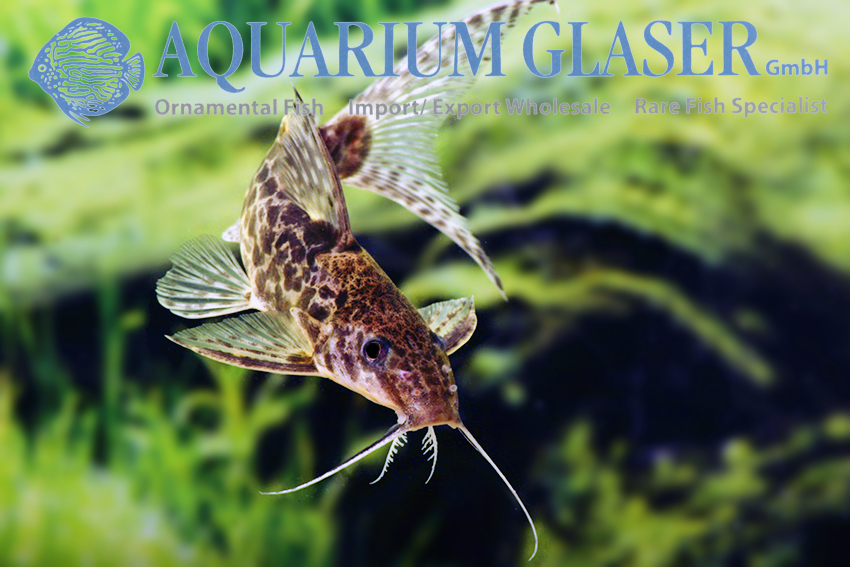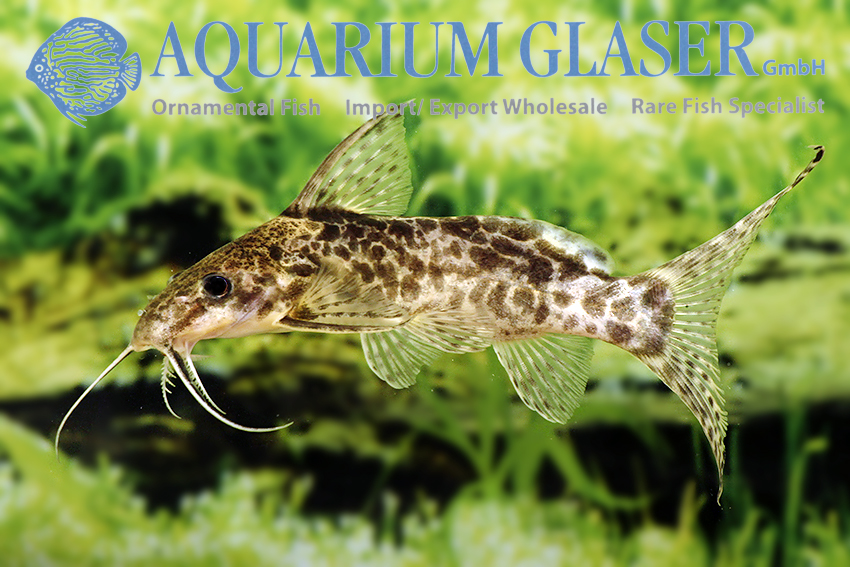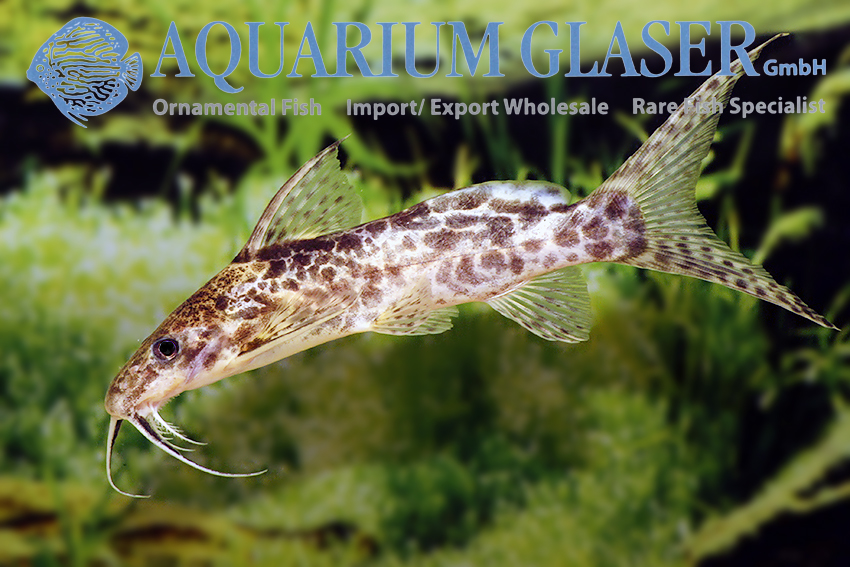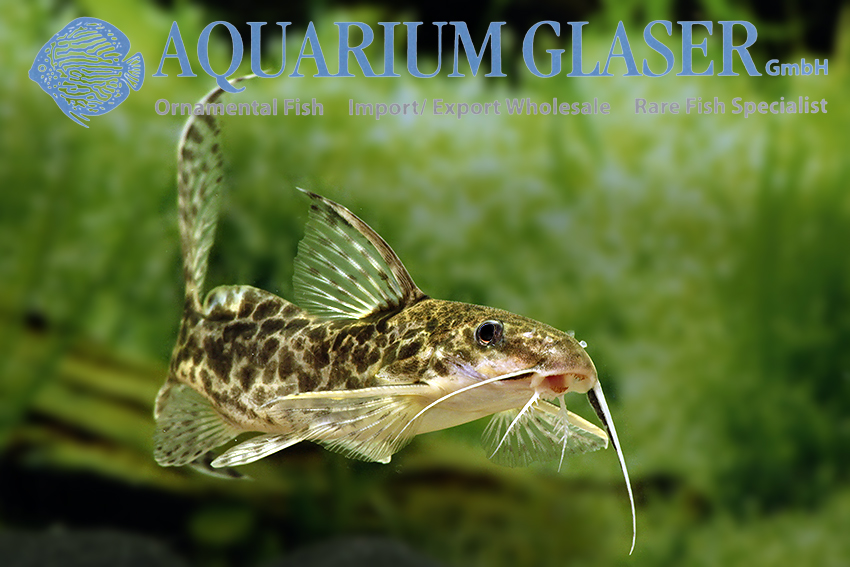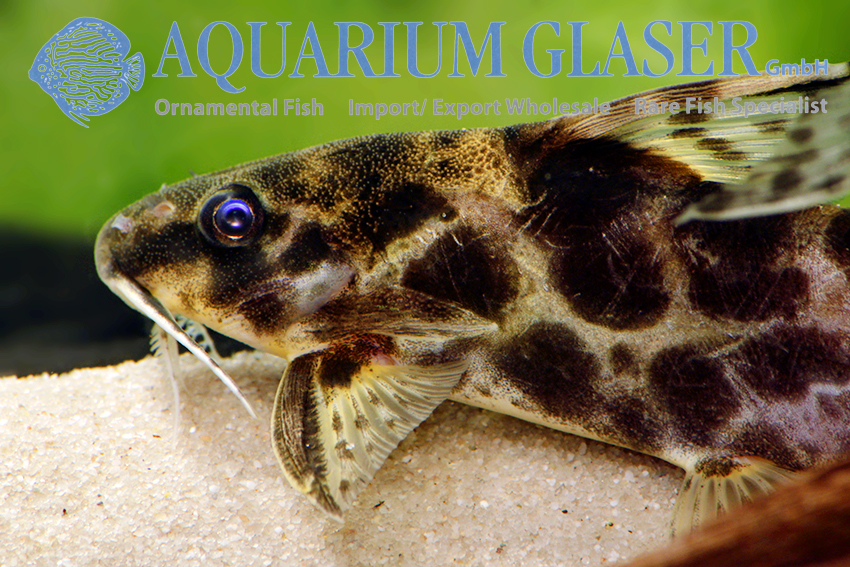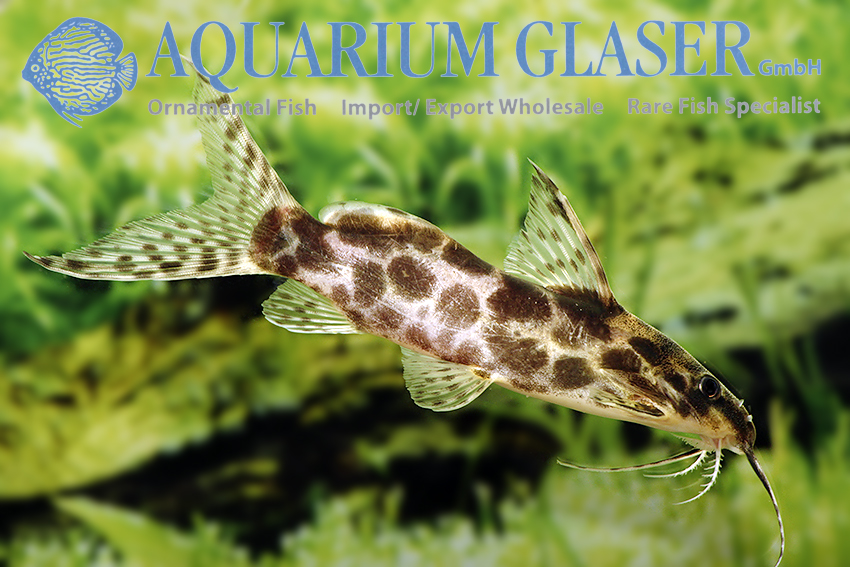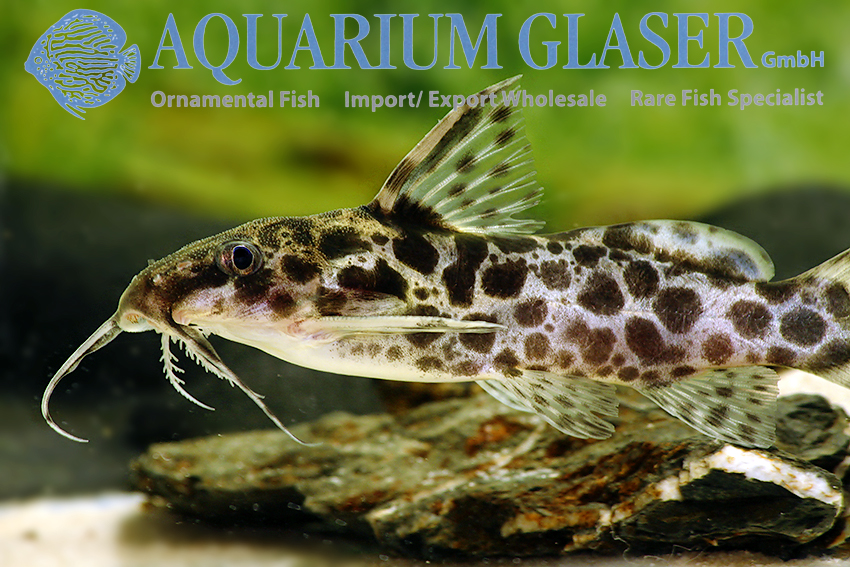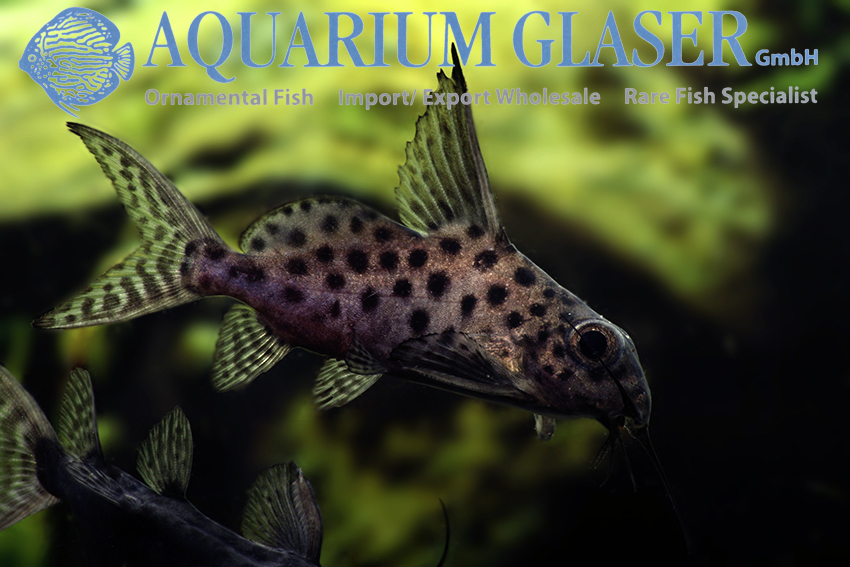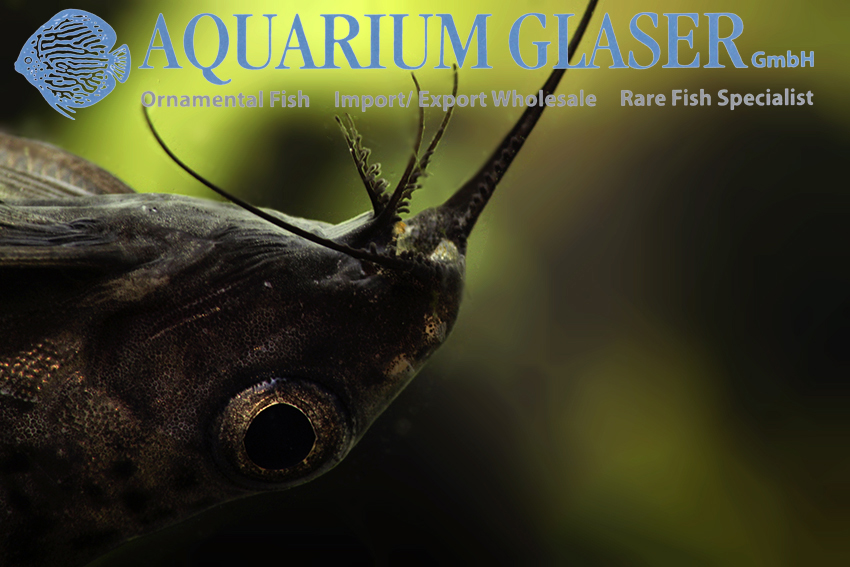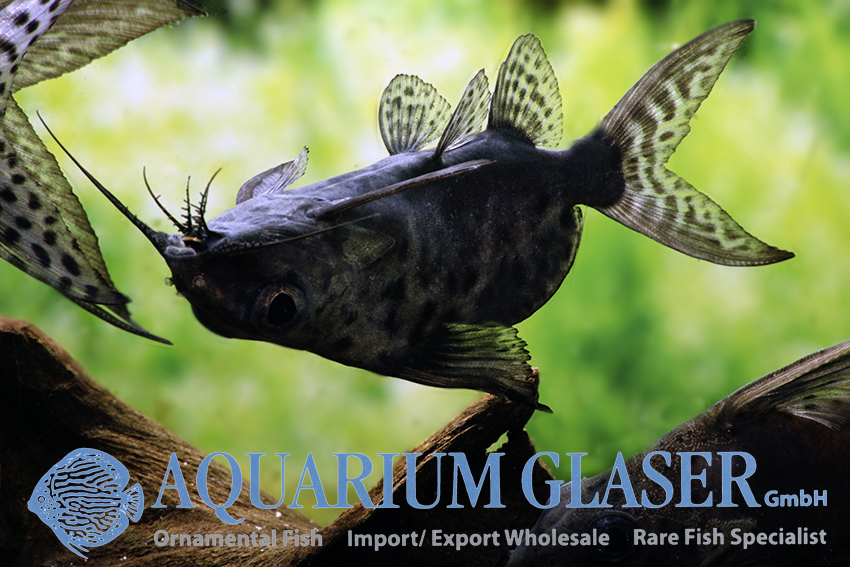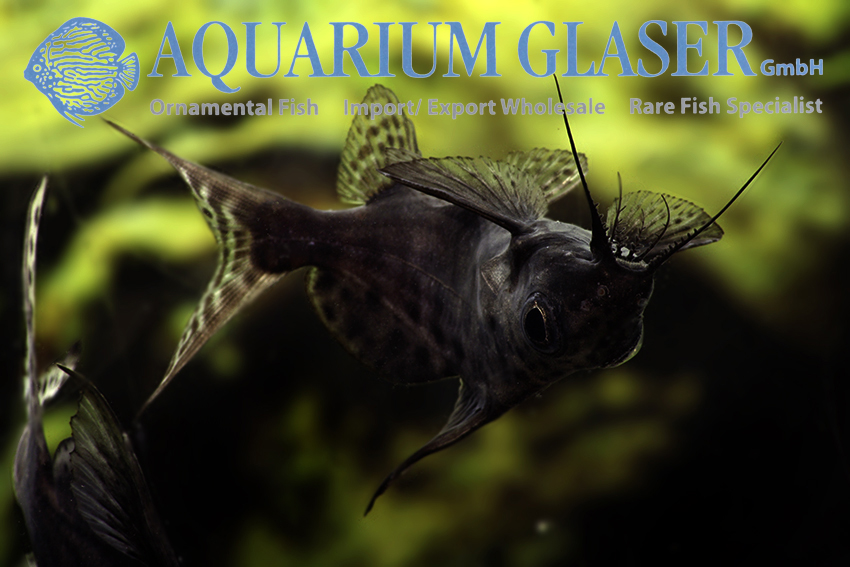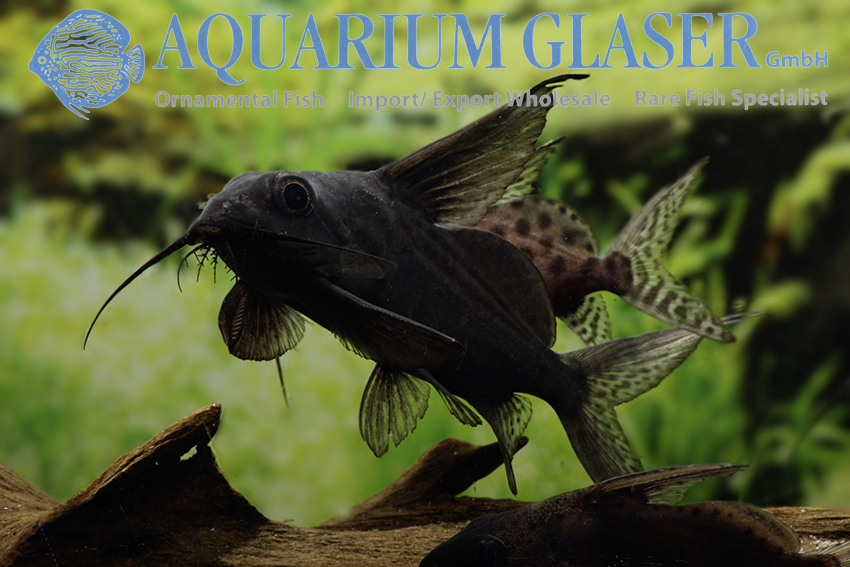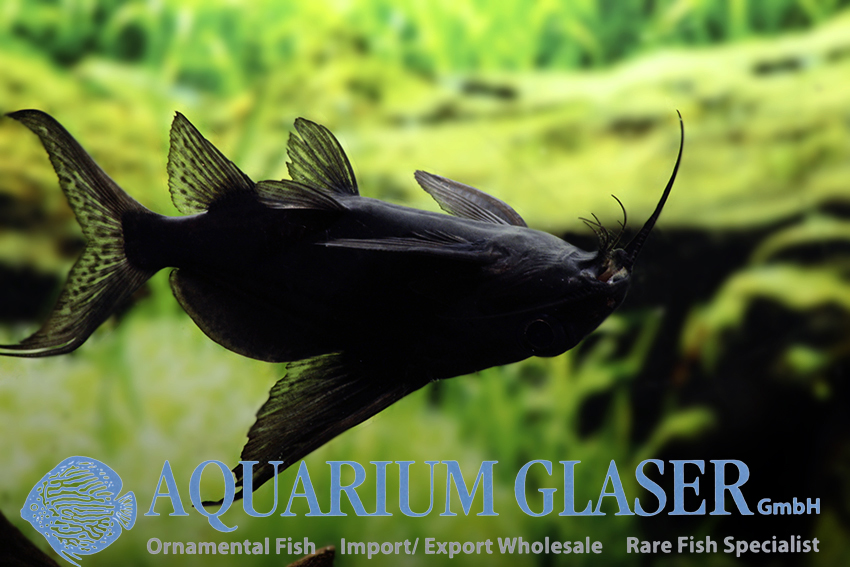We obtained a very rarely offered squeaker catfish from the Congo: Synodontis soloni. The species is medium sized (for squeakers): 20-25 cm long specimens can be called real big ones. The large caudal fin and the slender body give hints that this is a rheophilic species. Against conspecifics our specimens, which are currently 12-15 cm long, are quite peaceful. Obviously these fish live in dark places, as they eyes have strongly reflecting zones. This leads to funny artefacts in pictures taken with flashlights. We have added one picture to that post – a portrait – in which we left the artefact. In the others we have removed the „red-eyes-effect“ in a way that the fish look like one observes them with the bare eye.
There are two scientifically described, exrtremely simlar species that originate from the very same region and differ from S. soloni only by a few minor differences (eye diameter, shape of the humeral process, shape of the adipose fin, proportions of the body, shape of barbels). These species are named as Synodontis smiti and S. camelopardalis. However, in our import (35 specimens) many intermediate animals are respresented in respect of colouration, so we feel unable to assort them in a senseful way. Possibly S. smiti and S. camelopardalis are only synonyms to S. soloni. In any case the latter is the earliest described species (soloni 1899, smiti 1902, camelopardalis 1971).
For our customers: the fish have code 186804 on our stocklist. Please note that we exclusively supply the wholesale trade.
Text & photos: Frank Schäfer





